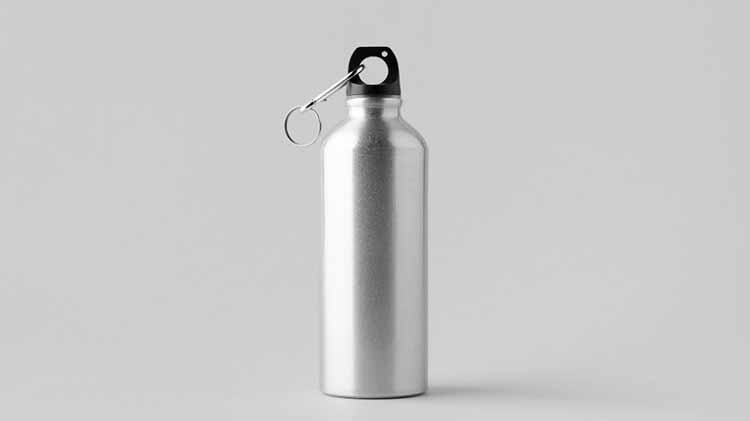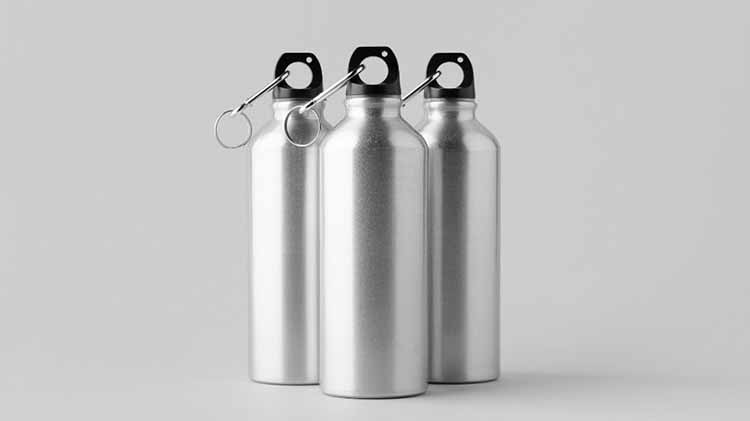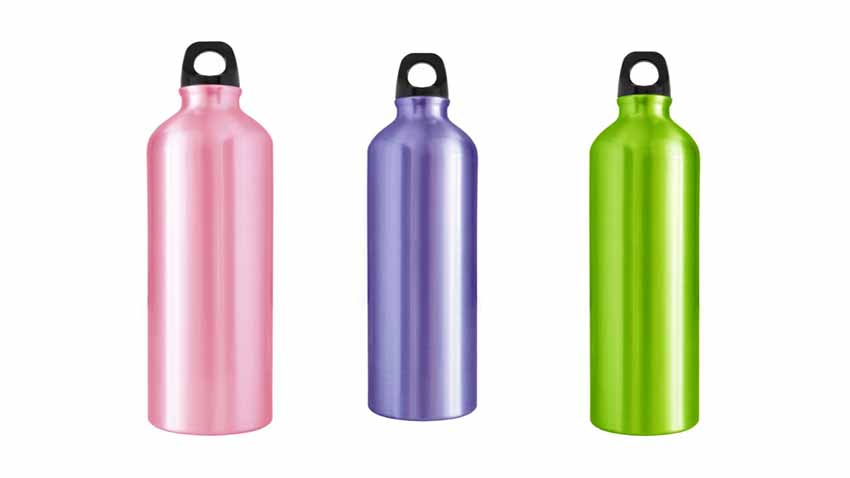We appreciate your concern about mold build-up in aluminum water bottles. Drinking from a moldy water bottle can be risky. Even if mold isn’t always visible, tiny spores can mix into your water, leading to stomach problems, allergies, or even respiratory issues.
Many people don’t realize their bottle has mold because it hides in small crevices like the lid, seals, or straw. If you aren’t sure how to properly clean it, don’t worry, as we’re here for you.
This guide will clear up the confusion. You’ll learn the answers to “Can mold grow in aluminum water bottles? How will you spot it? And, what are the best cleaning methods to keep your bottle safe and mold-free?”
Can Mold Actually Grow in Aluminum Water Bottles?
Yes. Even though aluminum itself doesn’t provide a food source for mold, there are some reasons why mold can thrive inside your water bottle.
Mold spores are everywhere. They float in the air, settle on surfaces, and can even cling to your hands, clothes, or pets. These tiny spores are too small to see, but they are always looking for the right conditions to grow into visible mold.

For mold to grow inside your water bottle, four main things need to be present:
- Moisture: Even a small amount of leftover water in your bottle can create the perfect damp environment for mold to grow.
- Food Source: Mold feeds on tiny organic particles, which can come from your saliva, food residue, or flavored drinks.
- Oxygen: Mold doesn’t need much air, so it can grow even in sealed places like inside pipes, walls, or a closed water bottle.
- Temperature: Most mold types grow well in temperatures between 40-90°F (4-32°C), which is the same temperature range as most indoor and outdoor environments.
When you drink from your bottle, tiny particles from your mouth, skin, or leftover food get inside. Over time, these provide the food mold needs to grow. If your bottle stays damp and isn’t dried properly, it becomes an even better place for mold to thrive.
If you leave your bottle in a bag, store it in a warm area, or close the lid while it’s still wet, mold can grow even faster. Mold also hides in hard-to-see areas like the lid, silicone seals, or straw. This makes it tricky to spot until it’s already a big problem.
How to Spot Mold in Your Bottle
Mold doesn’t always show up as an obvious black or green patch right away. Sometimes, the first signs are:
- A musty or sour smell.
- A slimy or rough texture inside the bottle.
- Discoloration around the lid, mouthpiece, or inside walls.
- Tiny specks that grow over time.
By the time you see visible mold, it has already spread and is releasing spores into your drinking water. That’s why regular cleaning and drying are so important to keep your bottle mold-free.
Is Mold in Your Aluminum Water Bottle Dangerous?
Yes. When you drink from a bottle with mold inside, you’re swallowing tiny mold spores. These can cause health problems, from mild discomfort to serious issues, especially if you have a weak immune system.
Here are some common health effects of mold exposure:
- Stomach problems: Mold can upset your digestion, causing nausea, cramps, or even diarrhea.
- Allergic reactions: Some people react to mold with sneezing, coughing, itchy eyes, or a runny nose.
- Breathing issues: Inhaling mold spores can irritate your lungs and throat, making it harder to breathe, especially for asthma sufferers.
- Infections: In rare cases, mold can cause infections, particularly in people with weak immune systems. Some types, like black mold, are more dangerous.
What’s The Best Way to Clean Your Aluminum Water Bottle?
Simply rinsing it with water will not keep mold away. To keep your bottle fresh and safe, here’s the best way to clean it thoroughly.
Daily Cleaning Routine
To prevent mold and bacteria formation, you should clean your water bottle every day. If your bottle is dishwasher-safe, that’s the easiest way to ensure a deep clean. Just place it on the top rack and let the hot water and detergent do the work.

If you don’t have a dishwasher, no worries. Follow these simple steps for handwashing:
- Empty your bottle: Pour out any leftover liquid before starting.
- Take it apart: If your bottle has a removable lid, straw, or silicone gasket, detach all the pieces. Mold loves to hide in small crevices.
- Rinse with warm water: Quickly rinse the bottle and its parts to remove any residue.
- Use dish soap and scrub: Add a few drops of dish soap inside the bottle, then use a bottle brush or sponge to scrub all areas, including the lid and mouthpiece.
- Rinse well: Wash away any soap with warm water.
- Air dry completely: Shake out excess water and leave the bottle to air dry upside down. A completely dry bottle prevents mold growth.
Deep Cleaning for a Mold-Free Bottle
Sometimes, your bottle needs an extra deep clean, especially if you notice an odd smell or see mold inside. Here are two effective deep-cleaning methods:
1. Vinegar Soak (Natural & Effective)
- Fill your bottle halfway with equal parts white vinegar and water.
- Close the bottle and shake it well.
- Let it rest for 30 minutes (or overnight for a deep clean).
- Rinse thoroughly with warm water and dish soap to remove any vinegar taste.
- Let the bottle air dry completely before using it again.
2. Baking Soda & Rice Scrub (For Tough Stains & Odor)
- Pour 1/3 cup baking soda and 1/3 cup uncooked rice into the bottle.
- Pour warm water halfway over your bottle and add a small amount of dish soap.
- Screw the lid on tightly and shake the bottle vigorously.
- Slowly unscrew the lid over a sink to release pressure (it may fizz).
- Empty the bottle, rinse thoroughly, and let it air dry upside down.
How to Prevent Mold Growth In Your Aluminum Water Bottle
Here are some additional tips to prevent mold build-up in your aluminum water bottle.
- Clean your bottle with dish soap and warm water daily.
- Scrub all parts, especially the lid, mouthpiece, and any hidden crevices where mold might grow.
- After washing, make sure your bottle and its components air dry fully before reassembling. Moisture encourages mold growth.
- For weekly deep cleaning sessions, soak the bottle in a vinegar solution overnight and scrub it thoroughly the next morning for an extra deep clean.
- Avoid using bleach. Stick to natural cleaners like vinegar, as bleach can be too harsh for regular use.
- Replace your bottle if it develops cracks or hard-to-clean areas where mold can hide.
- Use water bottle sanitizing tablets occasionally for a quick and effective clean.
Conclusion
So, you’ve got a detailed answer to your question- Can mold grow in aluminum water bottles?
Mold can grow in aluminum water bottles if they are not cleaned regularly. Moisture, warmth, and organic residue create the perfect environment for mold to thrive. To prevent this, wash your bottle daily with soap and water, and deep clean it weekly using vinegar or baking soda.
Always let it dry completely before use. Replacing old or damaged bottles can also reduce mold risks.

